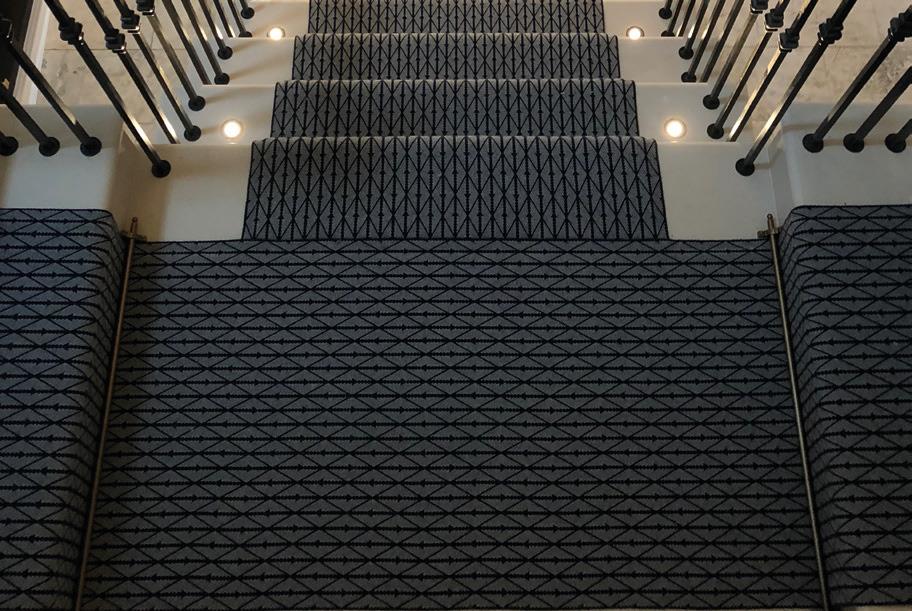
3 minute read
LAMBERT’S AND CONEY’S CASTLES
Emma Tabor and Paul Newman
Distance: 3 1/4 miles
Advertisement
Time: Approx. 2 hours
Park: Lambert’s Castle car park
Walk Features: Dorset is blessed with many fine hill forts and this walk links two of them with a relatively easy route starting at Lambert’s Castle and exploring the interior, ditches and ramparts before heading over to nearby Coney’s Castle to do the same. There are a few small climbs around the hill forts but nothing too strenuous. With fine views across the Marshwood Vale, the forts are fascinating places with different twists and turns as well as a wide variety of wildlife. It’s a wonderful walk in spring when bluebells and wild garlic are out but also in autumn as the beech and oak trees turn.
Refreshments: The George Inn, Chideock >
Each month we devise a walk for you to try with your family and friends (including four-legged members) pointing out a few interesting things along the way, be it flora, fauna, architecture, history, the unusual and sometimes the unfamiliar.
The hill forts of Dorset are well over 2,000 years old and their worn contours still endure, enabling you to imagine what life would have been like for those who either inhabited or worked in them. Given the locations of Lambert’s and Coney’s Castles, the views from their ramparts are often rewarding, with the eastern slopes of Lambert’s facing across the Marshwood Vale towards Pilsdon Pen and Lewesdon Hill, and the western ramparts of Coney’s Castle presenting a more secluded view towards Devon and the quiet valley from Fishpond down to the coast. Lambert’s Castle is a Site of Special Scientific Interest (SSSI) with a special mix of geology, archaeology and ecology. Here you can find remains of a bowl barrow, as well as being the site of a post-medieval fair and a telegraph station. Ecology includes pearl-bordered fritillary butterflies, stonechats, skylarks and many wildflower species. The eldest son of French Impressionist painter Camille Pissarro, Lucien
Pissarro, lived at Fishpond during the First World War and work from this time is held in the collections of the Tate Galleries.
Directions
Start: SY 366988
1 Park in the National Trust car park at Lambert’s Castle. Instead of entering the grassy plateau of the hill fort surrounds, start in the woods to the left of the main entrance to walk clockwise around the outer edges of Lambert’s Castle.
2 Walk through the woods, keeping the fence around Lambert’s Castle to your right. The ground falls away to your left; keep the higher ground through the woods alongside the fence and after 400 yards you come to a small gate. Go through this to take you along the outer edge of the fort’s ramparts. In the north east corner of the fort, cross inside the ramparts and then outside again to walk along the eastern edge of the fort, continuing through trees. In a short while, emerge from the trees and the path splits, going back into the fort. Stay outside the fort ramparts and as the trees clear, there is a lovely section with open views across The Marshwood Vale. Walk along the eastern edge of the plateau with a tall, narrow hedge behind you as you head towards the small southern entrance to the Castle.
3 Descend slightly to go through the entrance onto the road and walk across a small junction onto Long Lane. Now head gradually uphill, under the pylons, towards Coney’s Castle. After 1/3 mile, you will reach the car park for Coney’s Castle.
4 Go to the rear of the car park and turn left down the ditch of the outer defences of the hill fort which takes you around the eastern half of the fort. Keep going, for approximately 400 yards until you reach a wooden stile at the southern end of the fort which leads out onto the road that bisects the fort. Bear right here (instead of going over the stile) to enter the grassy interior of the fort. Take time to explore this beautiful spot with some lovely solitary oaks and small groves. Work your way to the far left hand corner to reach another stile which takes you onto the road. Coney’s really does have a magical ‘lost’ feel about it. Some of the oaks growing in the outer ditches are dripping with lichen and ferns and the display of bluebells in spring is stunning. There are some fine beech trees too, adding to the drama and structure of the scene; in autumn, the leaf colour is a patchwork of warmth and in spring, the freshness of the newly budded leaves against the sky is equally enchanting.
5 Cross the road to enter the western half of the fort, over a small bank. Turn left, keeping the trees and hedge on your left. Again, take time along here; it is worth wandering over to the western edge of the fort, which falls away steeply, and with good views towards east Devon. Walk down towards the southern edge of the fort until you come to an opening in the hedge, to go back out onto the road. Turn left onto the road and walk back towards the car park and stay on Long Lane to retrace your steps to the southern entrance of Lambert’s Castle.
6 Upon entering the fort, walk back up the path and then after 250 yards, bear left, following the higher ground through gorse, walking along the edge of the grassy plateau before heading slight right and diagonally across into the far corner and back to the car park at the start.









